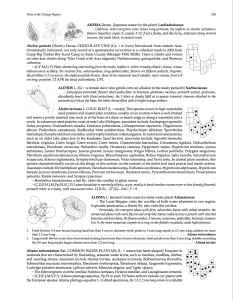by Gerould Wilhelm and Laura Rericha
with illustrations by Margot Mazur and publication coordinated by Bill McKnight
The Flora of the Chicago Region documents and details nearly 3,200 plant species and their associated organisms found in the 22-county Chicago region, including parts of Wisconsin, Illinois, Indiana, and Michigan. Weighing in at 10.5 pounds, its 1392 pages, 1517 illustrations, 3150 dot maps, keys, 47 full pages of color photos, 4 indices, glossary, nomenclatural authorities, literature cited, and plant-animal interactions and insights provide the student and expert not only keys to identification, but a lifetime of additional information to study and explore.
The flora is available for purchase at indianaacademyofscience.org. The book is also available at the Morton Arboretum bookstore in Lisle, Illinois.
“Magnificent–a major contribution to biodiversity studies.” – E.O. Wilson




“The ancillary information found in this flora reads like a field botanist’s manifesto. It is dripping with a wild-honey philosophy that both asks and allows the reader to ponder not only the “lilies of the field,” but the soil in which they grow, the insects that pollinate them, and the observer’s place in the field itself. The preface explains that the first purpose of the flora is “to provide the student with a means to identify vascular plants.” The second purpose is “to provide the user with an appreciation that plants are not stand-alone taxonomic integers in a landscape matrix, but rather, self-replicating genetic entities inextricably woven into a broader array of life adapted to a particular place, defined in part by climate, geography, soils, physiography, geologic age and history, and relationship with human culture.” At a time when science is myopically focused on plants as “taxonomic integers,” and overly obsessed with testing hypotheses by algorithm and computer modulation, where field botany is passed off as the epitome of antiquation, this work comes as a breath of fresh air and a much-needed confirmation that the study of organisms as they occur in nature is simultaneously existential, life-affirming, and whole-heartedly scientific.” – Justin Thomas, NatureCite
